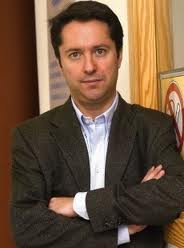 |
Quantum Information Theory: |
Biography J. Ignacio Cirac has been Director of the Theory Division at the Max-Planck Institute for Quantum Optics since December 2001. His main areas of research are the theoretical description of atomic systems interacting with light, as well as the development of a theory of Quantum Information. In those fields he has proposed several ways of constructing quantum computers, quantum simulators and quantum repeaters using ions, atoms and photons. Dr. Cirac was originally trained in Theoretical Physics at the University Complutense of Madrid (B.S. 1988) and obtained his PhD in Theoretical Quantum Optics in 1991 at the same university. He was Professor Titular at the University of Castilla-La Mancha (Spain) from 1991 to 1996, and carried out a postdoc at the same time at the Joint Institute for Laboratory Astrophysics (University of Colorado). Then he moved to the University of Innsbruck (Austria) as a Professor of Theoretical Physics. He is also honorary professor at the Technical University of Munich (Germany) since 2002. His Scientific publications include more than 300 research articles in scientific journals, including nature, Science and Physical Review Letters. Dr. Cirac is a correspondent member of the Spanish and Austrian Academies of Science, and Fellow of the American Physical Society. Abstract Quantum information is a multidisciplinary field of research whereby some of the basic concepts of Quantum Physics are exploited in order to process and transmit information in novel ways. During the last years, this field of research has experienced a very impressive progress, both in theory and experiment. In particular, today it is possible to manipulate single and few quantum systems (like atoms, ions, electrons or photons), in order to test the basic principles lying behind quantum information science. This has triggered new ideas about possible applications in this scenario. At the same time, some of the mathematical tools and concepts originally developed in the context of quantum information have found applications in other areas of Physics. In particular, both the physical systems available today, as well as those new theoretical tools, offer us completely new ways to investigate many-body quantum problems that appear in other branches of science and, in particular, simulate the behavior of certain condensed matter systems which cannot be described with any other available method. In this talk I will review this new field of research, and mention its applications as well as it major challenges.
|

